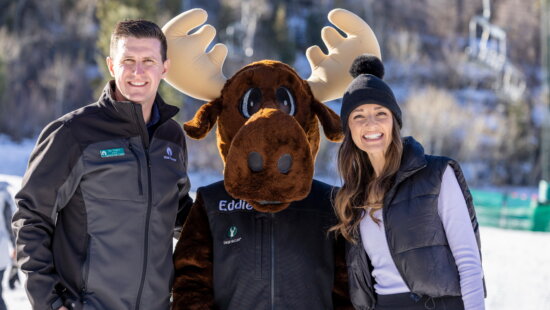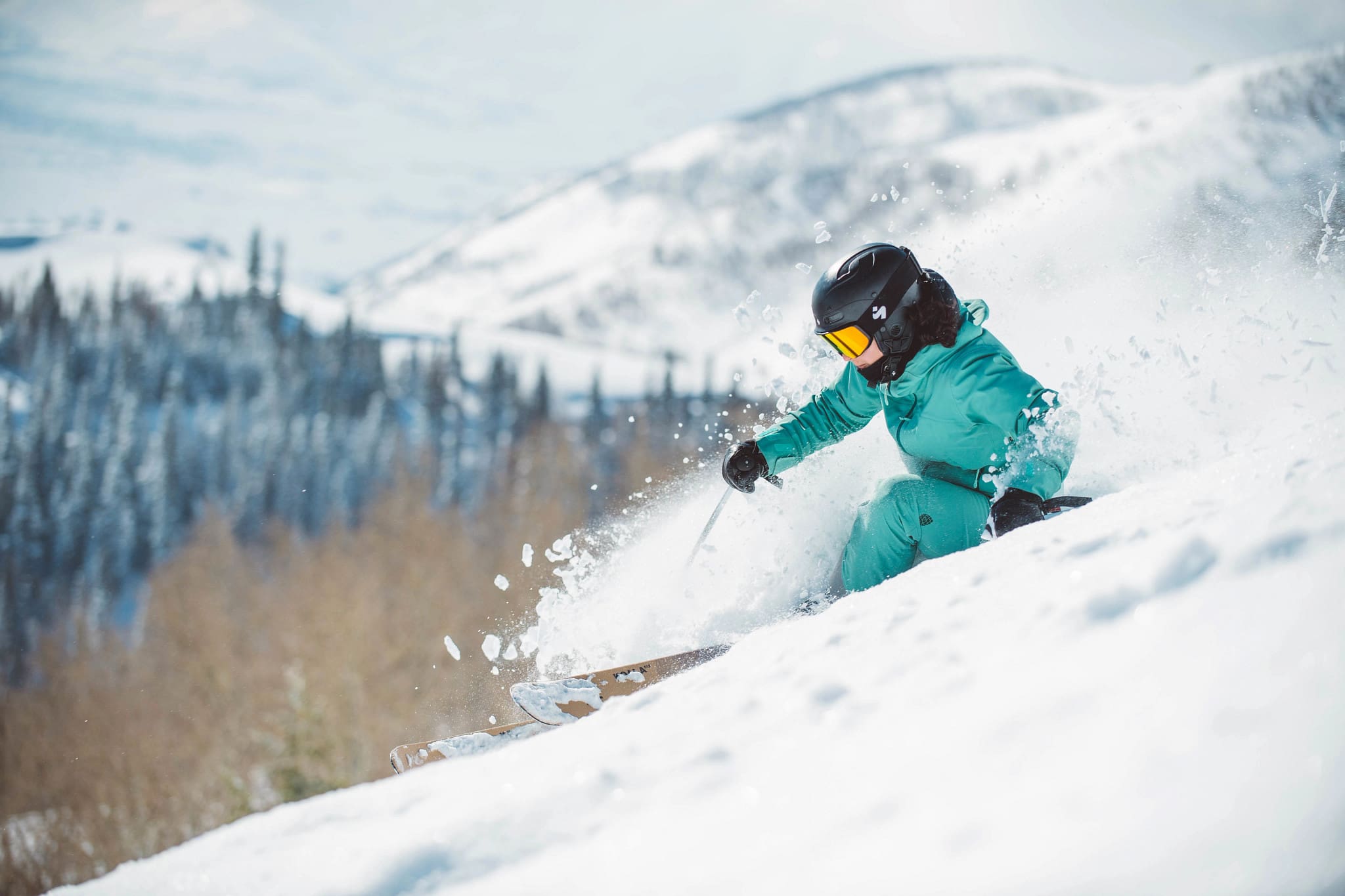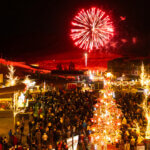Sports
A look behind the scenes of the 2023 World Cup at Deer Valley Resort
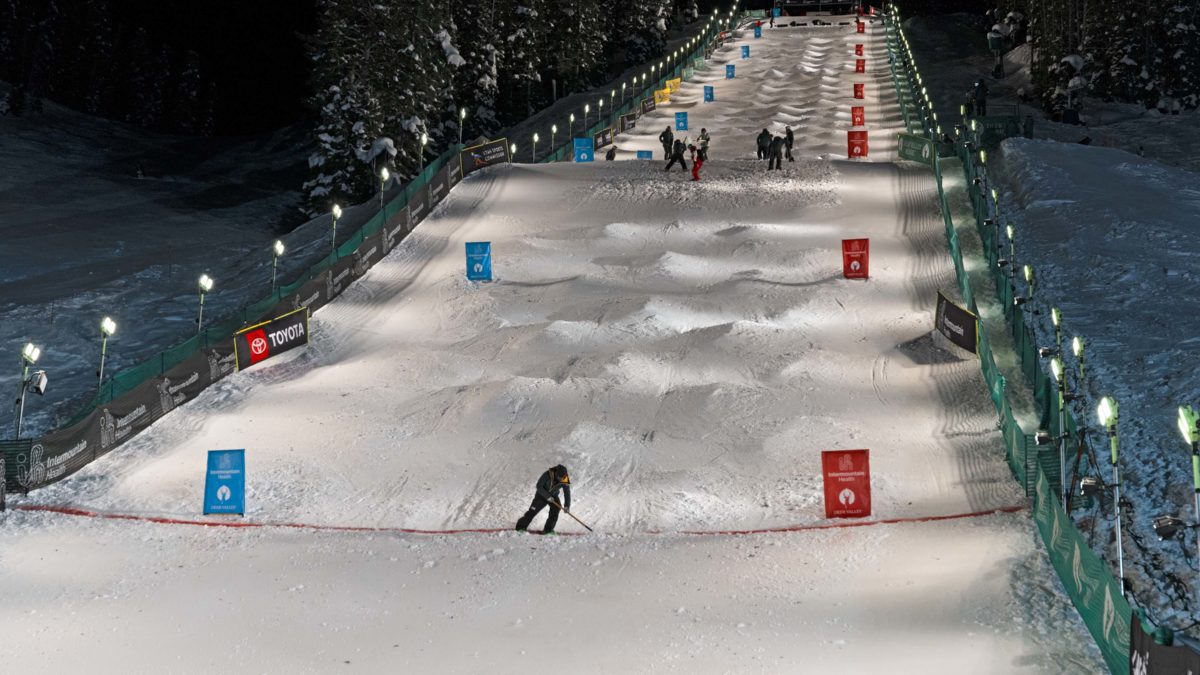
Volunteers and staff working to keep the course pristine in between the qualifying and final dual mogul runs. Photo: TownLift // Kevin Cody.
PARK CITY, Utah — As the 2023 Intermountain Healthcare World Cup at Deer Valley Resort comes to an end, it’s easy to forget all the hard work that went into making such an event possible.
The precision and design in creating each feature, the staff working the VIP area, mountain operations staff, ski patrol, the many volunteers, and many others made the three-night event happen. Each year brings new challenges as snowfall rises and falls.
For athletes, it’s about the opportunity to compete in the World Cup circuit at what has become a premier event of their season. Each group involved is what makes the annual World Cup event at Deer Valley Resort special.
Champion run was the steepest it has ever been for this year’s mogul competition, thanks to the high snow season. For the athletes, this posed additional challenges beyond the expected course difficulty. While each FIS mogul course follows precise measurements, there is room for variation, so they aren’t all exactly alike.
“Even though the mogul course has always been held on the Champion ski run, the intricacies of the course are slightly different. This year, our record early-season snowfall allowed the course builders to exercise some creativity and variety in mogul size, shape and pitch. The course builders dubbed the larger moguls ‘roguls’ (rogue moguls). These factors ensure Champion remains as the most difficult stop on the circuit and forces the athletes to stay on their toes,” said Garrett Lang, director of Mountain Operations at Deer Valley.
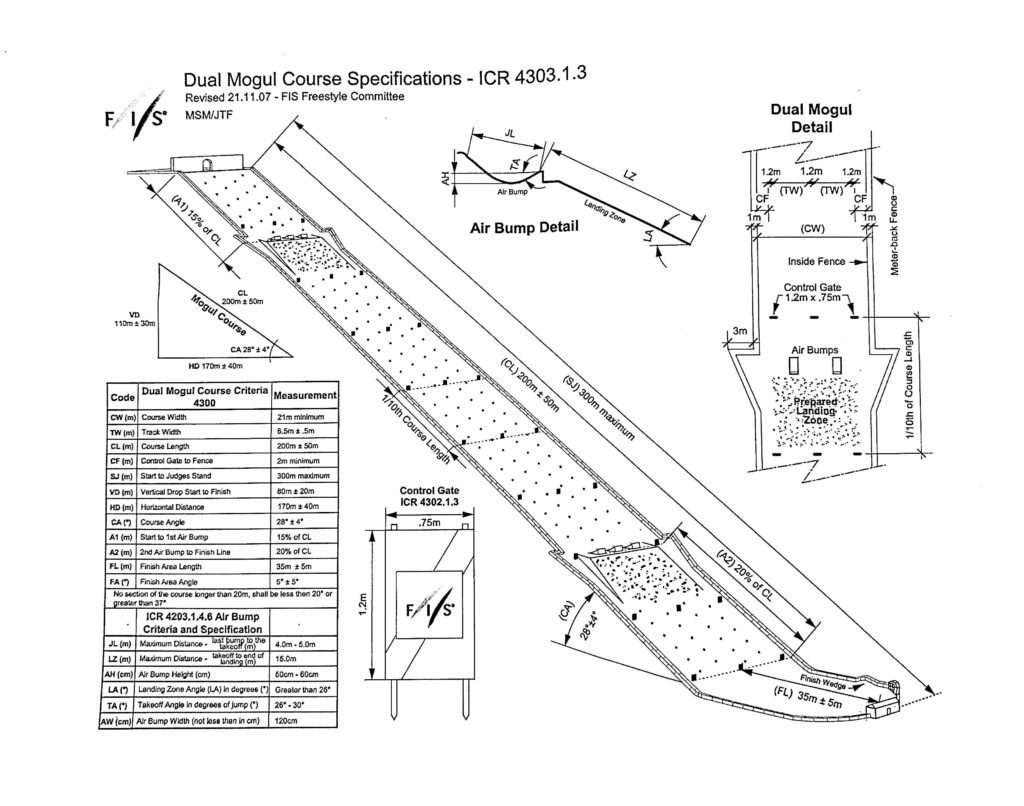
The distance from the control gate to the first air bumps is required to be 15 percent of the total length of the course. Courses can be anywhere from 150-250 meters from the control gate to the finish line. Each air bump must be between 50 and 60 centimeters high and not less than 120 centimeters wide.
Regardless of numerical values, while standing at the control gate, looking down into the first section of moguls and the eventual air bump, it’s easy to be intimidated and feel your heart race. Standing at the bottom of the course doesn’t provide anywhere near the same level of understanding as staring down at the steep run from above.
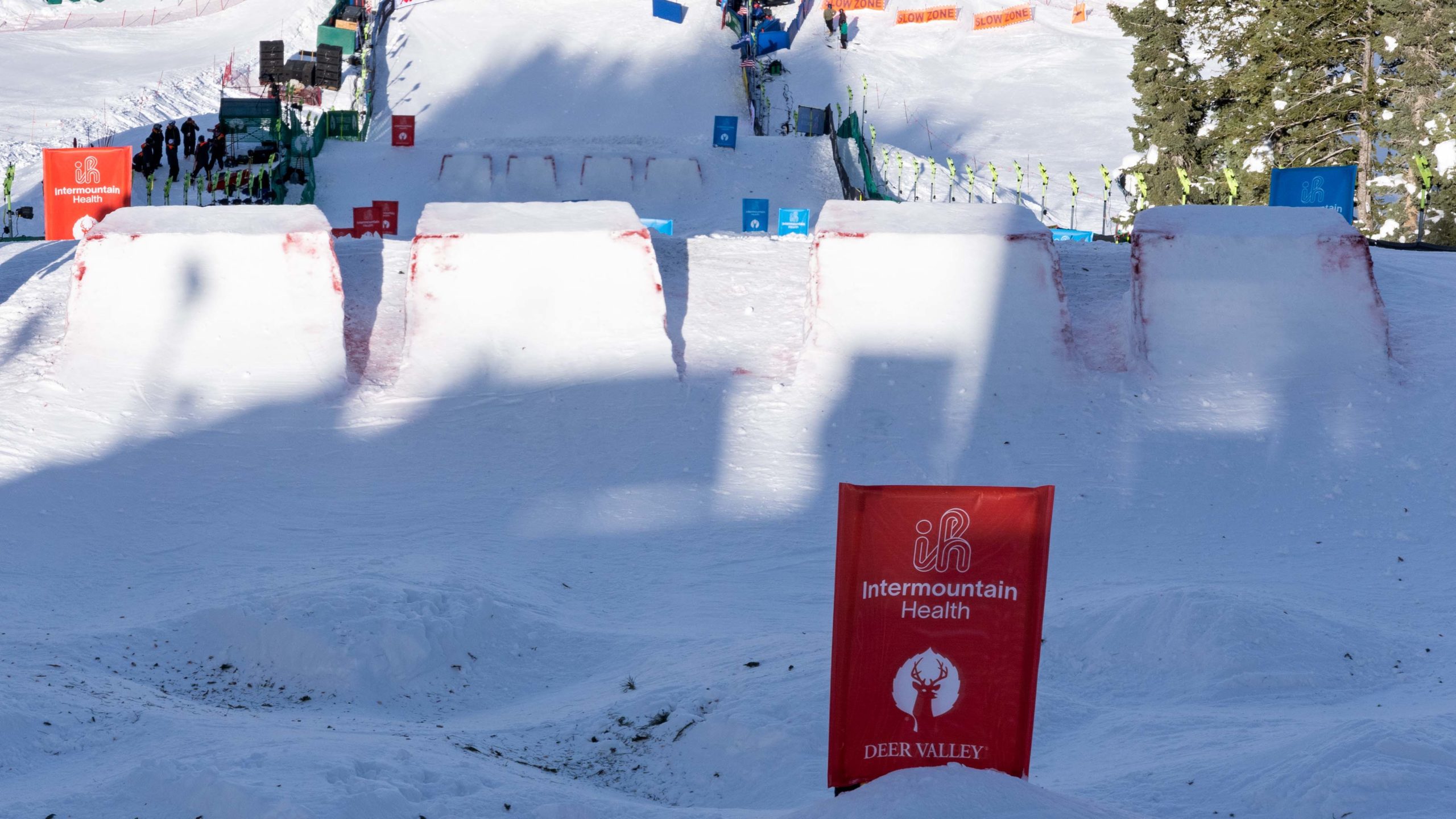
Like Champion, the aerial course follows precise measurements outlined by the FIS Freestyle Committee. The angle of the “in run” or lead-up to the jump is determined by its length. For example, if the length is 64 meters, it must have a 25-degree angle. The same can be said of the “table” or area between the jump and the landing zone. A key component of the course is the landing zone which must be a length of 30 meters.
“The aerial course takes a crew of over 20 staff and volunteers, one dedicated snowcat driver and over two weeks to construct the course, which includes two large ‘kickers’ or jumps. An aerial course in an exercise in precision and really puts the crew’s experience to the test,” said Steve Graff, VP of Mountain Operations at Deer Valley.
After a run is concluded, volunteers and staff work to break up the snow in order to maintain a soft landing area. As with the mogul run, chopped-up Christmas trees are scattered on the snow to help the athletes judge the snow, whether that be during landings or in the mogul sections. Depending on the time of day, simply seeing the definition in the snow can be challenging to nearly impossible; the chopped-up Christmas trees make that easier.

From moguls to ariels, each night of the World Cup had its own unique flair, with athletes pushing themselves, some even beyond their limits. Saturday saw lift tickets sell out by a little after 9 a.m., with many skiers staying to watch the dual moguls competition. While the raucous crowd helped make the fun atmosphere, it was the staff making each event happen, whether it be the snowmobile drivers making lap after lap to ferry media with their 20 points of camera equipment or ski patrollers who could frequently be seen dancing along to the DJ’s music, the World cup took an enormous crew from all areas of the resort to be successful.
“Deer Valley has the most passionate and experienced volunteers and staff who have been executing these international events for 25 years. We are so lucky to have the expertise and willingness across each area of resort operations to pull off such an incredible event for athletes and spectators, said Victoria Schlaepfer, events manager at Deer Valley. We really can’t thank them enough for all the hard work that goes on behind the scenes!”
Day 3: Dual Moguls, dual USA women’s podium at Deer Valley’s World Cup
Ski World Cup Day 1: Deer Valley World Cup Moguls, USA’s Jaelin Kauf, 2nd
















